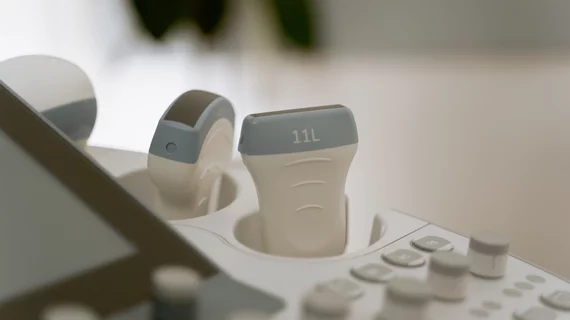6 pointers on POCUS leadership in the ED (and potentially beyond)
Has point-of-care ultrasound outpaced hospitals’ capacity to incorporate the technology without anointing any particular specialty its proper guardian? The case could be made.
In fact, a group of thought leaders has just made it.
“The separation between POCUS and radiology or other traditional consultative users of ultrasound has become more apparent,” write five physicians in the Canadian Journal of Emergency Medicine [1]. “A diagnostic pathway and associated work-up exist for most patient presentations and subsequent diagnoses. POCUS disrupts this.”
Noting the modality’s ability to supply targeted bedside imaging—STAT—Colin Bell, MD, of the University of Calgary, Daniel Kim, MD, of the University of British Columbia, and co-authors flesh out the good-problem-to-have dynamic.
POCUS’s speedy dexterity, they suggest, “creates tension as the patient and provider wait for the rest of the system to catch up.”
The authors spend the balance of their paper laying out a short course on clinical POCUS leadership specifically in the ED, presenting their material as six questions with answers.
Here are all six Q’s with abbreviated A’s.
1. Why is a robust POCUS program a necessary component of every emergency department?
POCUS is a core emergency medicine skill, but ensuring the high-quality use of POCUS requires a program that delivers robust training, documentation standards, image archiving and quality management.”
2. What is the role of an emergency department POCUS director?
The POCUS director is a physician who oversees the development, infrastructure and maintenance of an ED POCUS program … Typically POCUS directors are the liaison between the ED and other traditional users of ultrasound such as cardiology, obstetrics and gynecology, and radiology.”
3. How should a POCUS program oversee training and the granting of privileges for the use of POCUS?
The essential components of training when evaluating POCUS credentials and granting privileges are a.) a clearly defined introduction to the POCUS skill; b.) traineeship with supervision that may include scanning in both clinical and non-clinical settings; and c.) a summative assessment of knowledge and an image generation assessment that includes a directly observed practical.”
4. What are some best practices for documenting POCUS scans?
All POCUS scans should be documented [with] indication, type of study, findings and interpretation. It is best practice to have digital archiving on dynamic media linked to the patient record.”
5. What are the key components of a POCUS QA/QI program?
a.) Images must be obtained and stored for review; b.) The sonographer must document their findings; c.) The images must be reviewed, and feedback is given on both technical and clinical grounds; d.) Feedback on images must be reviewed by the sonographer; e.) Data on feedback must be stored for later review; and f.) Steps for remediation must be clear in cases where a physician does not meet the QA/QI criteria.”
6. How should a POCUS program manage ultrasound purchase and maintenance?
Purchasing decisions should be made in collaboration with all clinicians using POCUS in a given practice setting. … The POCUS director is the liaison between the ED, biomedicine, infection control and industry, coordinating machine maintenance, conditioning, and replacement.”
For complete answers and additional insights, read the whole thing.

